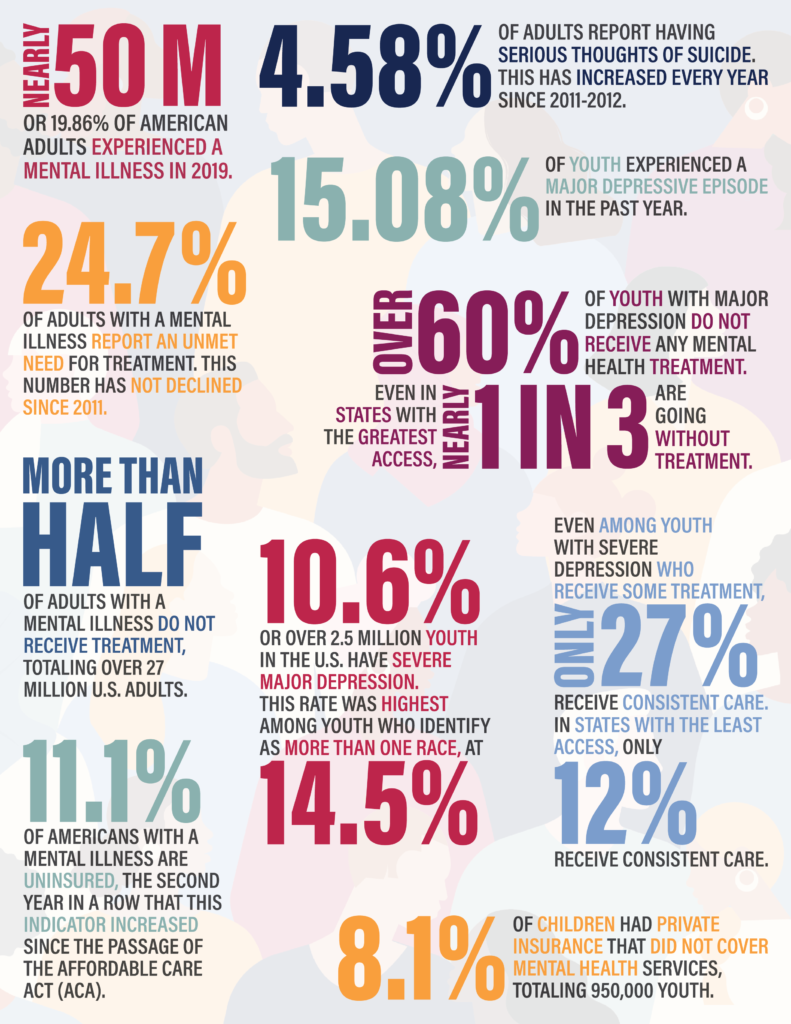Mental Health America’s annual report, “2022 The State of Mental Health in America” is a collection of data across all 50 states and the District of Columbia and seeks to answer questions on the status of individuals living with mental health issues and access to insurance and health care.
The report is designed to provide a snapshot of the mental health status in our country so that policy makers and mental health professionals can track changes in the prevalence of mental health issues and access to care and understand how the data can impact legislation and polices moving forward, MHA also hopes that seeing the data trends in each state will increase dialogue with individuals and their families about improving outcomes and making mental health a priority.
It’s important to note that the report is publishing data sets gathered in 2018-19, which means the data trends do not reflect experiences and trends from the Coronavirus pandemic.

Overall, Connecticut ranked #4. States that received an overall ranking of 1-13 indicates lower prevalence of mental illness and higher rates of access to care. The 2021 State of Mental Health report rated Connecticut at #13. Connecticut remains at #4 overall for adults, slips to #8 for youth.
“Connecticut has done a good job of restoring our place at the top of the list of states that are making mental wellness a priority, yet in regards to access to insurance and treatment, our state ranked #9. It’s important to remember that Connecticut has one of the highest levels of income inequality across the country. To ensure we keep investing in our mental wellness, we can’t take our foot off the gas pedal. We must increase our support of prevention and intervention efforts, and continue to make mental health parity a priority,” said Luis Perez, President and CEO of Mental Health Connecticut.
Some good news: Connecticut’s percentage of Youth with Severe Major Depressive Episode decreased from 9.0% in 2017-2018 to 7.8% in 2018-2019. Yet, our state ranked #8 for youth, and there are some concerning findings overall:
- Over 2.5 million youth in the U.S. have severe depression, and multiracial youth are at greatest risk
- Over 60% of youth with major depression do not receive any mental health treatment. Even in states with the greatest access, nearly one in three are going without treatment.
- The percentage of adults with a mental illness who report unmet need for treatment has increased every year since 2011.
- Both adults and youth in the U.S. continue to lack adequate insurance coverage. 11.1% of Americans with a mental illness are uninsured.
- Rates of substance use are increasing for youth and adults, even prior to the COVID-19 pandemic.
“To set our state up for success, we must invest in efforts to support our youth. From traditional treatment to holistic wellness programs, it’s time to elevate the importance of access to care, prevention, and self-regulation. The only way to do this is through funding and policies and ensuring that mental health care is just ‘health care’,” said Perez.
To download the full report and review rankings by state and categories, go to: https://www.mhanational.org/issues/state-mental-health-america

